Coins
RELEASED TODAY: OFFICIAL UK STAR WARS™ 50ps
The first UK Star WarsTM coin collection has been released today to celebrate 40 years since the release of Return of the Jedi in 1983.
The Star Wars franchise is a worldwide phenomenon, and despite being the brainchild of American movie maker, George Lucas, the Star Wars franchise has many links to British Heritage and the United Kingdom.
The coins have been specially produced in partnership with The Royal Mint, Walt Disney Company and Lucasfilm to create something extremely special for Star Wars’ fans and coin collectors alike.
The first design features none other than R2-D2TM and C-3POTM, with both characters inside the Millennium Falcon, the famous starship that has played a role in some of the greatest victories of the Rebel Alliance and the New Republic.
R2-D2TM and C-3POTM are the first to feature on the four-coin collection, with the other coins in the series also including other iconic duos including, Darth VaderTM and Emperor PalpetineTM, Luke SkywalkerTM and Princess LeiaTM, and Han SoloTM and ChewbaccaTM all with stunning designs that capture the true essence of the films.
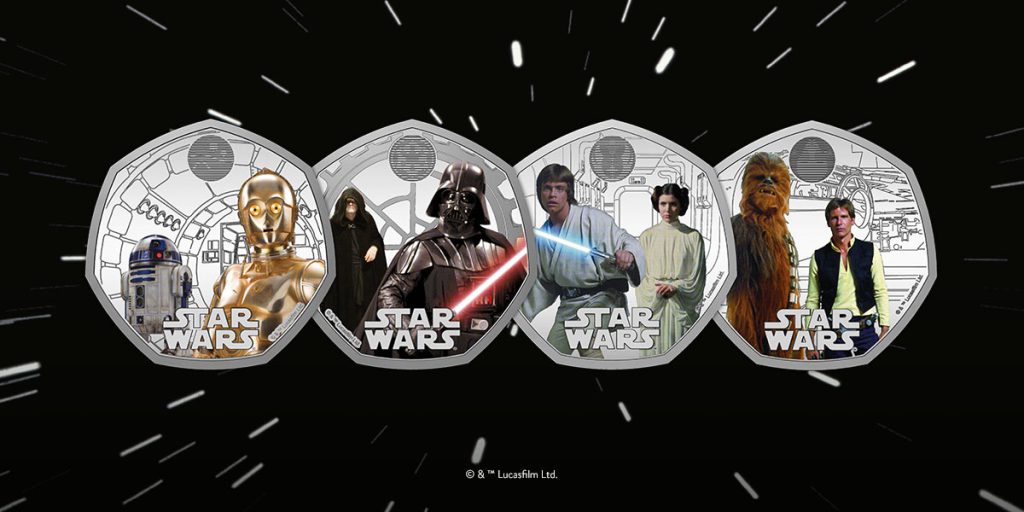
Each coin is available in superior Brilliant Uncirculated Quality, or strictly limited Silver Proof Quality.
But it is the Silver coin that is especially unique, featuring the addition of vivid colour. This is a process that allows George Lucas’ iconic duos to be faithfully reproduced as accurately as possible.
What’s more, the silver coin has been limited to just 12,500 worldwide. When you consider the number of coin collectors who will want this 50p coin, alongside the number of Star Wars fans that will too, demand will likely exceed availability.
Finally, each of the coins in the series also has an intricate detail you may have missed – a lenticular feature. When the coin is tilted, two intricate symbols are revealed for Tatooine and the Rebel Alliance Starbird. Not only does this enhance the design, but it is also a favourite amongst coin collectors.
Whether you choose the Brilliant Uncirculated coins, or the Silver Proof version, rest assured all coins have been beautifully packaged as the perfect piece of memorabilia.
__________________________________________________________________________________
By opting into the Westminster Collection Star Wars Priority Lists, you can automatically receive the next coins in the series without the hassle!
Celebrate Canada Day with the most sought-after Royal Canadian Mint coins!
1st July marks Canada Day. It has been celebrated since 1867 when the country became a self-governing region within the British empire, combining three colonies to create Canada.
So fittingly, you can celebrate with some of the most sought-after coins from The Royal Canadian Mint:
SOLD-OUT at the Mint: 2023 Maple Leaf 1oz Silver Proof Coin
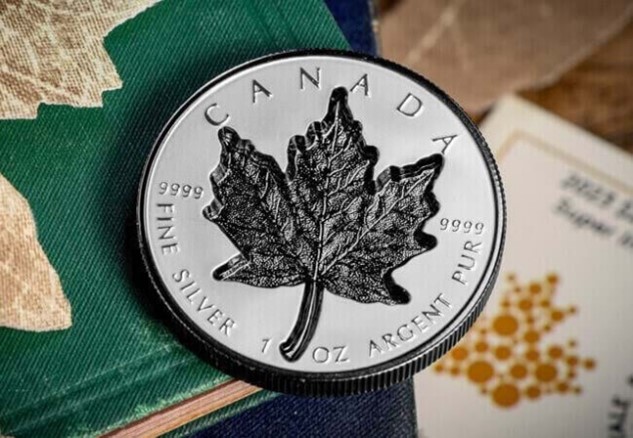
This 1oz Pure Silver coin depicts the iconic Maple Leaf design – and has already sold-out an edition limit of 8,000. But, we have just 41 remaining…
Click here to secure yours before it’s too late >>
SOLD-OUT: Canada 2023 St Edward’s Crown Fine Silver Coin

This is the perfect way to honour the Coronation of King Charles III, with a tribute to the St Edward’s Crown, worn by our new Monarch for the first time in 70 years.
Secure the SOLD-OUT St Edward’s Crown Silver coin here >>>
NO LONGER AVAILABLE: Mercury’s Horned Face Silver Proof Coin
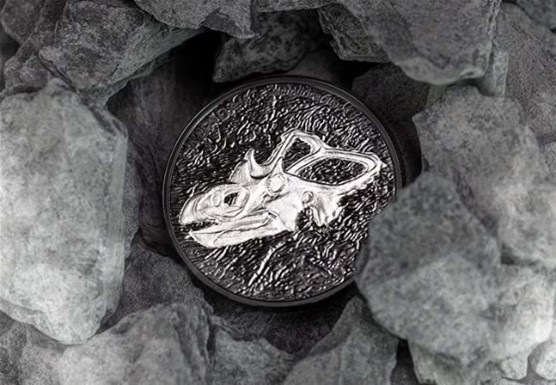
This could be your last chance to secure the unique fossilized Silver coin that’s no longer available from the Royal Canadian Mint!
Click here to learn why you need to secure it for your collection >>
75th Anniversary of VE Day Silver Proof Dollar
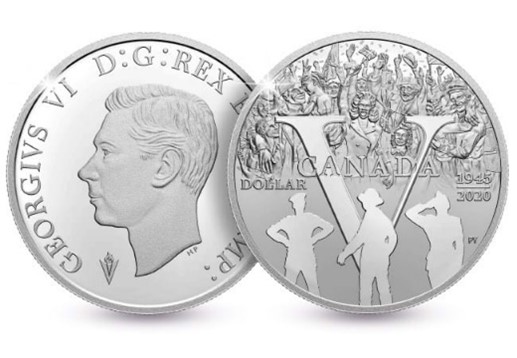
As one of Canada’s most sought-after annual releases, this is your second chance to secure the 75th anniversary of VE Day Silver Proof Dollar that’s no longer available at The Mint.
But with only a small number remaining, secure yours here before it’s too late >>
2oz Silver Rippling Canadian Flag with Vivid Colour

The prestigious 2oz Silver Proof coin from The Royal Canadian Mint featuring a coloured depiction of the Canadian flag is the first of its kind.
And excitingly, there are a handful left in stock! Click here to secure yours >>
Secure the East India Company’s FIRST Sovereign range to feature King Charles III
Renowned for their intricate minting, stunning designs and innovative concepts, The East India company is at the height of numismatic craftsmanship.
And every year, The East India Company issue their Gold Sovereign coin range.
Released to celebrate key events, anniversaries and the history of the British Monarchy, these coins are steeped in tradition, artistry, and inspired by Sovereigns from the past and present.
But this year, collectors have waited for arguably the most anticipated East India Company release in decades: the first Sovereign range to feature our new monarch, King Charles III.
Read on to learn why The East India Company’s yearly Sovereign releases are so sought-after, why this year’s issue has already created a collecting buzz, and how you can secure one…
The Range
The East India Company’s renowned Sovereign range is known for its spectacular designs and detailed minting techniques. Historically, each coin has thoughtfully depicted part of the Royal Coat of Arms, paying tribute to the British Monarchy.
This year, in May 2023, the world witnessed the crowning of King Charles III. This was the first Coronation celebrated for a British monarch in over 70 years.
So, collectors anticipated The East India Company’s 2023 Sovereign range to be more spectacular than ever…
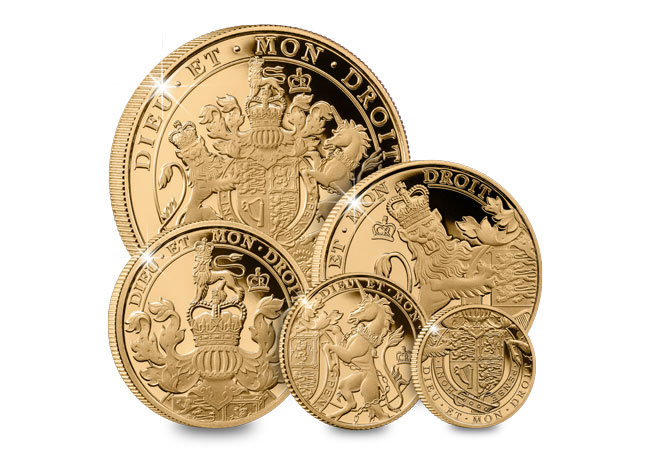
Included in this brand-new Sovereign range from the East India Company is:
- The Sovereign
- The Double Sovereign
- The Three-Sovereign Set
- The Five-Sovereign Set
Insatiable Demand
These are the FIRST East India Company Sovereigns to feature King Charles III on the obverse.
This official effigy has been designed by Glyn Davies, which also features on the new British Isles coin releases.
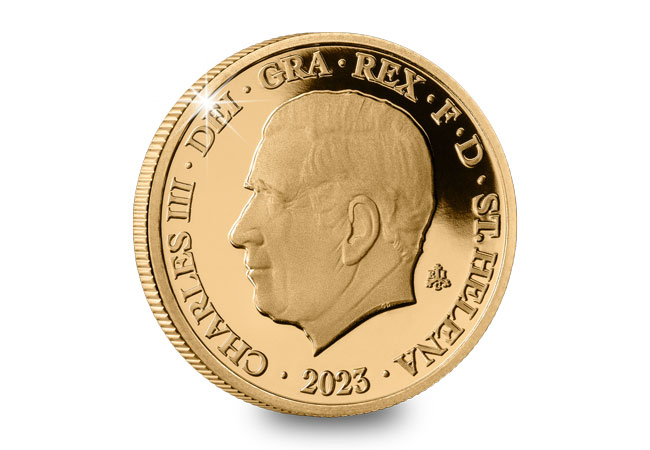
All struck from 22 carat Gold, each Sovereign in this range features the unique East India Company Privy Mark which depicts a portrayal of St. Edward’s Crown bearing the initials CR.
But, this Sovereign range has been given strict worldwide edition limits.
In fact, The East India Company’s 2023 Sovereign is nearly 24 times more limited than the SOLD-OUT UK 2022 Memorial Sovereign, which was also the first to feature King Charles III.
What’s more, the 2021 Gold Sovereign and the 2022 Five-Sovereign set completely sold-out.
Don’t miss out! Click here to explore the entire range and discover the Sovereign that suits you >>
How to secure yours…
The emphasis on this being the first Sovereign range from The East India Company to feature King Charles III cannot be overstated.
When you consider past sell-outs combined with demand collectors demonstrated for the first UK Sovereigns to feature His Majesty, demand is expected to be unmatched.
But, The Westminster Collection has been lucky enough to secure a small number of Sovereigns from this brand-new range. Although, looking at the edition limits, they are unlikely to be available for long…
Click here to view the BRAND-NEW King Charles III Sovereign range from The East India Company >>
